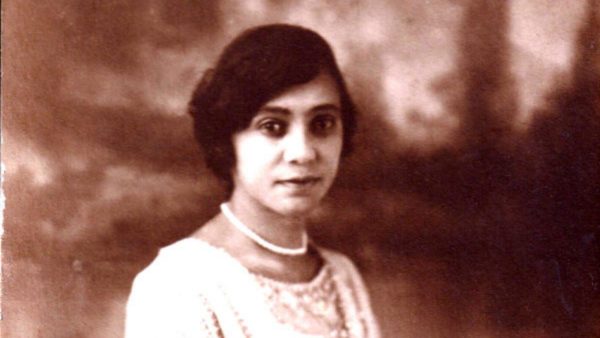Boston Public Quartet’s rough-edged playing makes a mixed case for American composers
The Boston Public Quartet is reviving a pair of American chamber pieces that had fallen so far out of circulation they were at one time effectively lost.
In a concert on Wednesday night at All Saints Parish in Brookline, the ensemble presented Florence Price’s circa-1935 Piano Quintet in A Minor and the 1890 Piano Quintet in A minor by Boston’s own Arthur Foote.
In both cases, the material itself proved better than the performance. But the Public Quartet will have another turn with Price and Foote in September in Quincy and a chance to do better by these two unjustly overlooked American composers. The ensemble was a stellar advocate on Wednesday for a living composer, Virginia-based Jeraldine Saunders Herbison, whose Piano Quartet, Op. 18, No. 3, was played for a live, in-person audience for the first time anywhere.
The concert on Wednesday was produced with backing from the American Music Project, a nonprofit founded by Classical Review publisher and editor Lawrence A. Johnson to promote new and under-represented American classical repertoire.
The story of Price, an African-American woman who was born in Little Rock in 1887 and settled in Chicago, is a reminder that a country can all too easily forget its own musical heritage. Her Piano Quintet in A minor, like the rest of her music, fell into neglect after her death in 1953. A lucky discovery of her manuscripts in 2009, in a dilapidated Illinois house, returned her to public consciousness.
Likewise, Foote’s Piano Quartet went unheard after his death in 1937 and remained out of print for 50 years.
Though Price dealt with oppression due to her gender and ancestry, she scored a significant first when Frederick Stock conducted her Symphony No. 1 with the Chicago Symphony Orchestra in 1933. A host of recent recordings reveals her to be a master of the symphonic canvas, where she blends African-American and traditional classical styles in a personal way.
But Price was just as adept in more intimate forms. Her Piano Quintet in A minor reflects both her intellect and intuition. Pentatonic melodies evolve into lush harmonies over the course of the opening movement. The second movement teems with folksy humor while the finale unfolds with an exuberance that carries its tension beyond the final bars. The crux of the score is the Juba dance, which explores styles from ragtime to boogie-woogie.
Foote’s Piano Quartet, for its part, conveys depth and jubilation without resorting to Romantic excess. Like his contemporaries in the so-called “Boston Six” group of composers, Foote enjoyed popularity in his day, and this quartet stood as the hallmark of his superb artistry. Foote performed it himself along with the Kneisel Quartet around Boston, at the 1893 World Exposition in Chicago, and in Europe. The quartet’s refined qualities, still attractive today, leave one to wonder why this music has been overlooked for so long.
Unfortunately, Wednesday’s performances failed to reveal the subtleties of either work. Overall, the musicians simply felt under-rehearsed. The quick movements of Price’s quintet came off as overly cautious and tentative, the rhythms lacking clarity. Pianist Joy Cline Phinney had trouble with almost every page turn, her lines dampening the sense of flow in each movement.
Foote’s quartet fared even worse. While the opening movement and Adagio showcased the ensemble in lush moments, the Scherzo lacked its requisite fire. The finale was simply rough and labored, even breaking down completely at one point.
These felt more like trial readings than fleshed out realizations, falling well short of the high artistic levels required by this music. Price and Foote deserved better.
The musicians seemed to put most of their effort (and rehearsal time) into Herbison’s Piano Quartet. A prolific composer of orchestral, chamber, and vocal music, Herbison possesses a knack for poetic depth and rhythmic vitality. Completed in 2014, her quartet exhibits seismic flair over its fifteen-minute span.
Each movement contains a poetic title that provides a vivid description of her dissonant yet traditional soundscapes. Strings open “Melancholy on the advent of departure” in searching phrases, and the piano enters the fray with authority, setting a steady rhythm that underscores a lyrical line. Tension returns in “There is a stubblefield where black rain falls,” where dense piano chords engage in a dialogue with pizzicato strings. The finale, “I walk and chase a savage fairy still,” unfolds in disjointed statements that build to a frenzy.
Here the musicians were in absolute focus, deftly realizing the work’s stormy textures, biting dissonances and pent-up tension. Herbison is a composer who needs to be heard in Boston more often.
The Boston Public Quartet will perform music by Bologne, Foote, Price and Brahms 3 p.m. Sunday, Sept. 11 at the Thomas Crane Public Library in Quincy. bostonpublicquartet.com
Posted in Performances





Posted Sep 02, 2022 at 4:22 pm by Emma
The Boston Public Quartet is usually so well rehearsed. The musicians collaborate well together and truly value the music they are sharing. If this performance was not as they would have liked, then I’m sure that their performance on September 11th will be nothing short of brilliant.
Posted Oct 20, 2022 at 3:23 am by Interlude.hk
It is such encouraging news to know that the quartet is bringing back all these chamber music gems to the public. Hopefully they can be heard more often as you’ve mentioned!